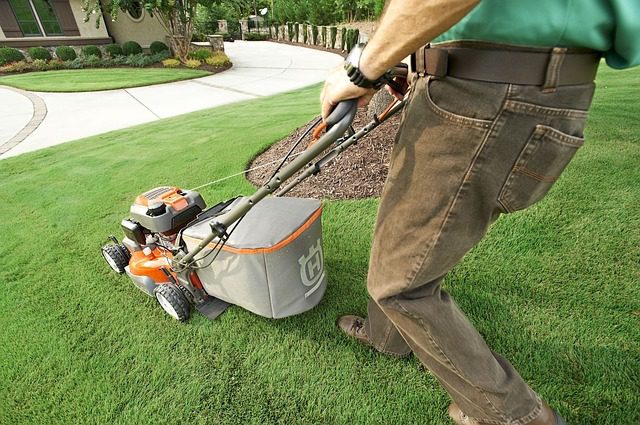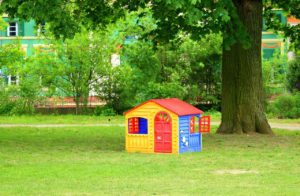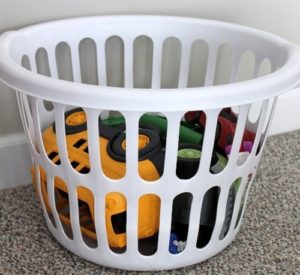As we move towards the heat of the summer and the middle months of the year, it can sometimes be tricky to look after your lawn. To ensure that your yard is ready for heatwaves of mid-July and August, you’ll need to prepare your outdoor spaces well in advance. In fact, most of the leg work for maintaining your grass in the summer happens before the summer even starts. If you’re planning a new backyard garden design or xeriscaping project, you might have more on your mind than simply looking after your lawn. However, to set up your outdoor spaces to succeed in the upcoming season, sometimes it’s best to start with the basics.
Table of Contents
Use a Rake to Remove Thatch
The first step in preparing your lawn for the summer is removing dead grass, thatch, and other organic debris, such as sticks or leaves. By clearing your yard space out, you’ll have an easier time in the later stages of the growing process. If you’re planning to build a walkway through your lawn, it’s best to allocate this space as soon as possible, so you’re not planting grass in areas that don’t need it.
Thatch and other yard debris can choke new growth, preventing your lawn from flourishing in the summertime and potentially increasing the number of weeds you need to pull. A liquid lawn dethatcher or a dethatcher rake is usually the right place to start. Luckily, most of what’s removed from your lawn following a long winter should be compostable. Many cities and municipalities offer compost bins to residents, though they are usually an optional service
because they may cost a monthly fee. Check your city’s government website for information.
Clip Trees and Bushes That Block Sunlight
If a section or your lawn is too covered, you may have difficulty keeping the grass in that area green. Too little sunlight can prove harmful because it means your yard is missing out on vital nutrients and, in some cases, warmth. If any trees or bushes hang over large sections of the lawn, you may want to consider clipping a few branches. However, make sure you’re not overdoing it- these plants are also vital for creating a healthy-looking outdoor space.
Aerate Your Lawn
After removing thatch, dead weeds, and yard debris, you can start with the aeration process for your lawn. Usually, it’s a good idea to start this process in mid to late Spring, after the last frost. You’ll need a lawn aerator, which pokes holes in the surface of the lawn so that fertilizer, water, air, and other vital nutrients can reach the roots of your grass.
If you don’t have an aerator, you can purchase one from Home Depot or a similar hardware and home services store. Alternatively, you may want to consider hiring a professional aerator service. Either way, your lawn will look and feel healthier throughout the entirety of Summer. Don’t worry about removing the aeration corks from the lawn’s surface- these will usually work their way back into the soil within a week or two, depending on the amount of rain you receive.
Reseed Bare or Thin Patches
Once the aeration process is complete, you can begin reseeding your lawn. To start, you’ll need to identify the thinner, browner patches of the lawn. You’ll usually find them in areas where the sunlight is less consistent, but if you live in a drier climate like California or Colorado, the opposite may be true. Reseeding the dryer areas of your outdoor space balances your lawn’s color and restores the healthy, lush green you’re aiming to create.
Make sure to use the best lawn feed, fertilizer, and plenty of water during and after the reseeding process. Mulch or seed accelerator can also be helpful, though it isn’t always necessary. You may also want to consider liming your lawn- a process that balances the PH levels of the soil, so they’re at a more neutral level (approximately PH 7). If you’re concerned about your yard wearing thin throughout the summer, you may also want to consider overseeding your lawn. You can complete this process in either Spring or Fall.
Raise Your Lawnmower Blades
If you have a tough time keeping your lawn green through the hotter months of the summer, you may want to consider raising your lawnmower blades. Raised mower blades mean you’ll have longer grass, which typically means you’ll need to mow more often, but benefits for the color and health of your lawn often outweigh this concern.
Longer grass blades allow the lawn to trap more water and provide shade for the soil, so it doesn’t get dry quite as fast. If you’re mowing your grass in the middle of summer, you may want to leave the clippings on your lawn rather than dispose of them. However, the opposite is generally true in Spring, when you’re cutting your grass in preparation for the warmer weather.
Know Your Local Climate
Maintaining a healthy lawn requires a different process depending on your local or regional climate. Keeping your grass green in the Pacific Northwest usually requires a less specific process than it might in a dryer region, such as central and southern California. If the weather is more predictable, you can usually start preparing your lawn for summer early in Spring. If you’re growing in a dry or high-elevation climate such as Colorado or New Mexico, you’ll need to avoid overfertilizing your lawn, as it can cause your yard to consume more water.

Water Only When Necessary
Too much water can be just as harmful as the opposite. If you’re running your sprinklers in the middle of the day, switch up their schedule or timer so they’re operating in the early AM or at dusk. Sometimes, it’s the small changes that make the most difference in keeping your lawn green.
Featured Image by Pexels from Pixabay




